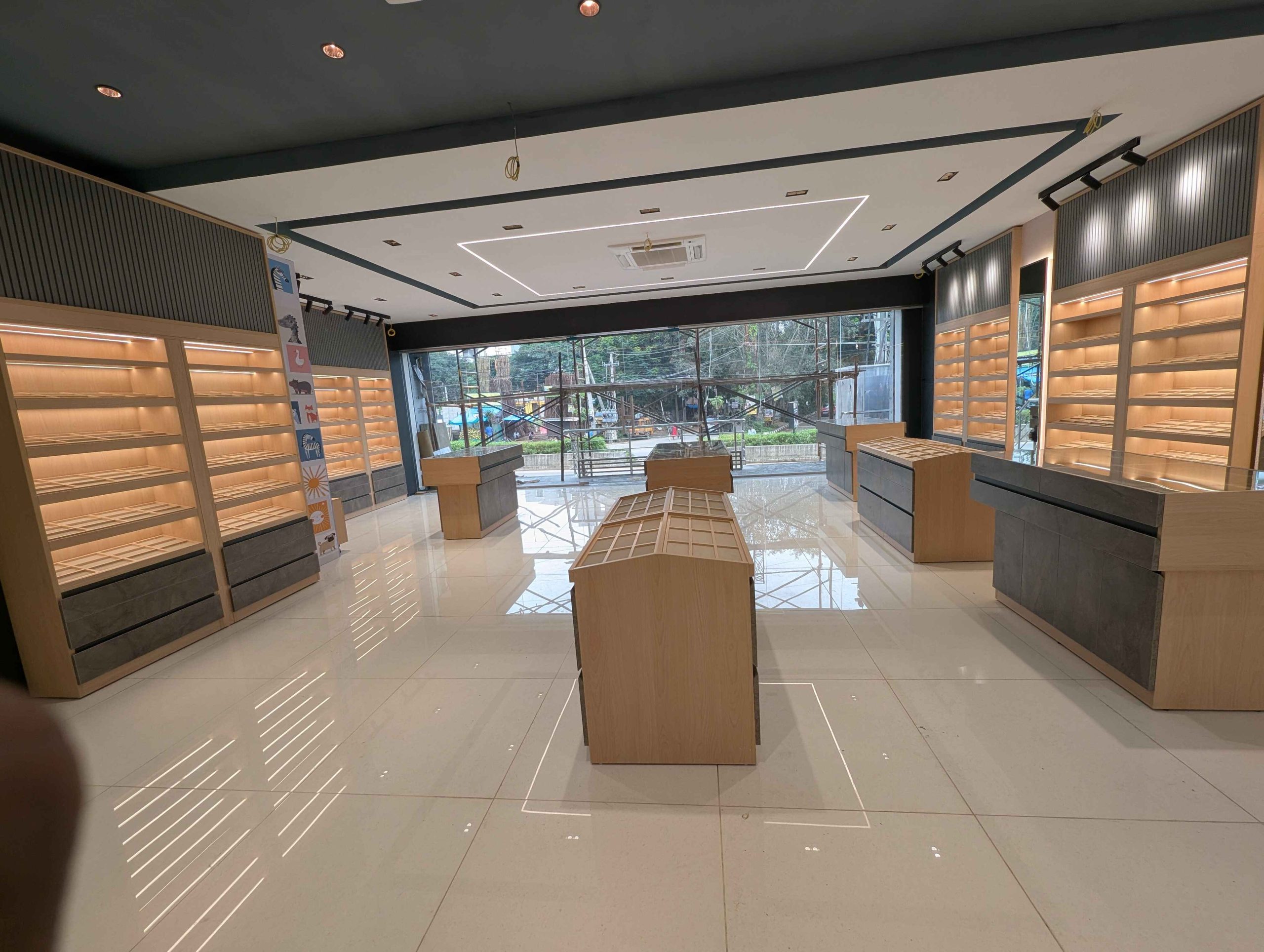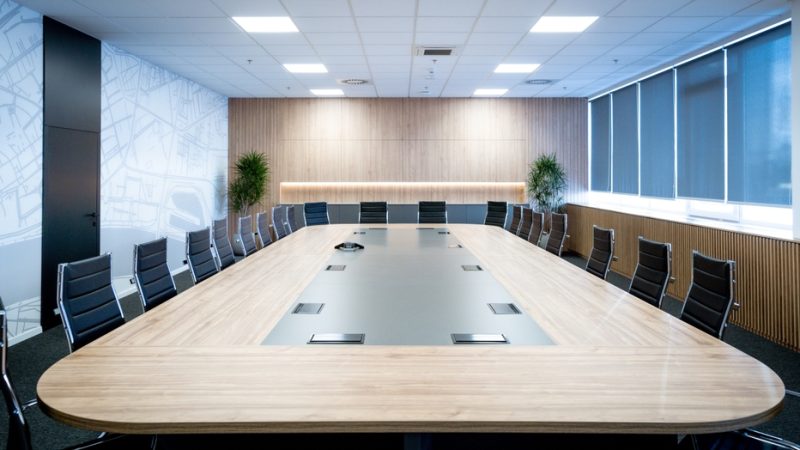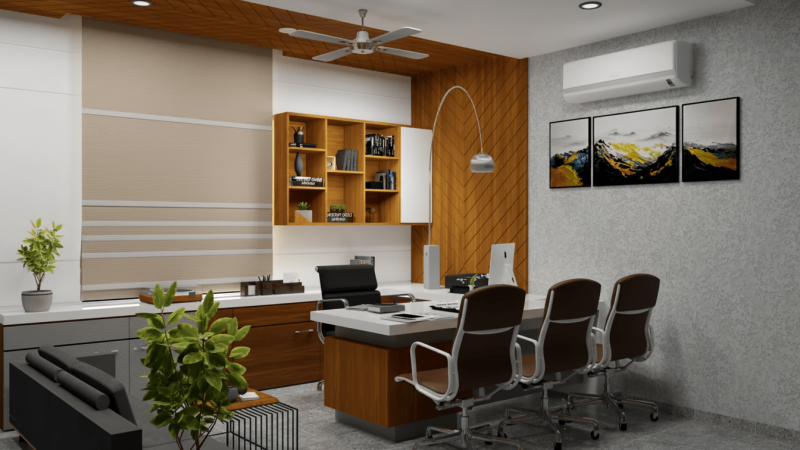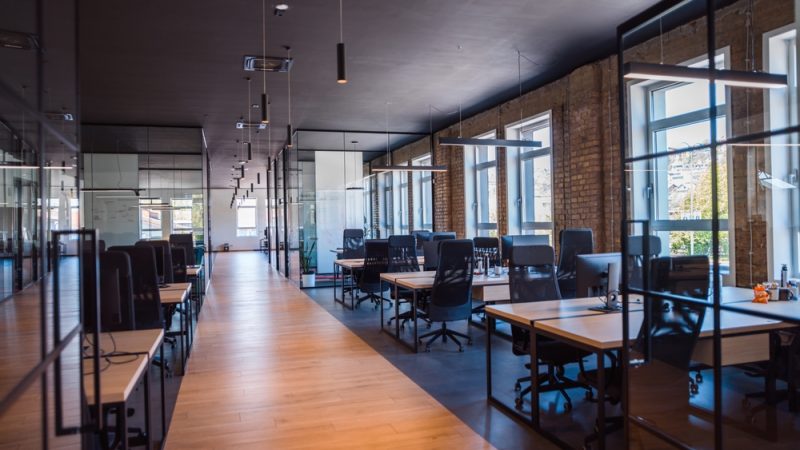What Are the Latest Trends in Modern Office Interior Design?

The workplace of today looks nothing like it did a decade ago. With the rise of remote work, hybrid models, and employee well-being initiatives, modern office interior design has become more than just aesthetics—it’s about creating spaces that foster productivity, creativity, and collaboration.
If you’re planning to revamp your office or set up a new one, this Q&A guide on modern office interiors answers the most common questions business owners, managers, and designers have. Let’s dive in.
Why Is Modern Office Interior Design So Important?
The way an office looks and feels directly impacts employee satisfaction, productivity, and brand image. Here’s why investing in a modern design makes sense:
-
Boosts Productivity: A well-designed office layout reduces distractions and helps employees focus.
-
Encourages Collaboration: Open layouts and breakout zones promote teamwork.
-
Reflects Brand Identity: Colors, artwork, and décor can showcase your company culture.
-
Enhances Well-being: Natural light, ergonomic furniture, and green spaces reduce stress levels.
Modern office interiors create a balance between functionality and style, making them essential in today’s work culture.
How Do I Start Planning My Modern Office Interior Design?
Planning is the foundation of any successful office redesign. Here’s a step-by-step approach:
-
Assess Your Needs: Understand the number of employees, departments, and types of workspaces required.
-
Set a Budget: Decide how much you’re willing to invest in furniture, décor, and technology.
-
Choose a Design Theme: Minimalist, industrial, or biophilic designs—pick a style that aligns with your brand.
-
Prioritize Comfort: Ergonomic chairs, adjustable desks, and proper lighting should be non-negotiable.
-
Hire Professionals: Interior designers bring expertise in space optimization and functionality.
Pro Tip: Use design software like AutoCAD or SketchUp to visualize layouts before finalizing.
What Are the Latest Trends in Modern Office Interior Design?
Staying up-to-date with current trends helps create a workspace employees love. Some popular trends include:
-
Open-Plan Layouts: Reduces barriers, making communication easier.
-
Hot Desking: Flexible seating options for hybrid work models.
-
Biophilic Design: Incorporating plants, green walls, and natural light for a calming effect.
-
Multipurpose Areas: Spaces that work as meeting rooms, lounges, or brainstorming hubs.
-
Technology Integration: Smart lighting, wireless charging stations, and video conferencing zones.
These trends make offices dynamic, collaborative, and employee-friendly.
How Can I Use Colors Effectively in Office Interiors?
Color psychology plays a crucial role in workplace design. The right colors can influence mood, energy, and creativity.
-
Blue: Boosts focus and efficiency—ideal for conference rooms.
-
Green: Brings calmness and reduces eye strain—perfect for open workspaces.
-
Yellow: Inspires creativity—great for brainstorming rooms.
-
White and Grey: Minimalist and professional—works well for walls and large areas.
The key is balance—use bold colors for accents and neutral tones for larger spaces.
How Do I Create Collaborative Spaces in Modern Offices?
Collaboration is at the heart of modern office culture. Some design tips include:
-
Breakout Zones: Casual seating with bean bags or lounge chairs encourages informal discussions.
-
Glass-Walled Meeting Rooms: Maintains openness while offering privacy.
-
Standing Meeting Tables: Quick huddles become more efficient with standing spaces.
-
Tech-Enabled Spaces: Large screens, video conferencing tools, and whiteboards for brainstorming.
A mix of formal and informal areas supports teamwork without compromising individual focus.
Modern Office Interior Design Ideas for Productive Workspaces
What Furniture Works Best for Modern Office Interior Design?
Furniture choices affect comfort, flexibility, and aesthetics. Consider these essentials:
-
Ergonomic Chairs: Reduce back strain and improve posture.
-
Adjustable Desks: Allow employees to switch between sitting and standing.
-
Modular Furniture: Easily reconfigurable for different needs.
-
Storage Solutions: Cabinets and shelves keep the office clutter-free.
-
Acoustic Panels: Minimize noise in open offices for better concentration.
Investing in quality furniture pays off in terms of employee health and productivity.
How Do I Add Greenery to the Office Design?
Bringing nature indoors improves air quality and reduces stress. Options include:
-
Potted Plants: Low-maintenance indoor plants like snake plants or pothos.
-
Vertical Gardens: Living walls that double as stunning design elements.
-
Indoor Trees: Ficus or Areca palms add a dramatic touch.
-
Desk Plants: Small succulents for individual workstations.
Green elements make offices feel fresher, healthier, and more inviting.
What Lighting Works Best for Modern Office Interiors?
Lighting influences mood, productivity, and overall ambiance. Use a combination of:
-
Natural Light: Large windows or skylights to reduce dependency on artificial lighting.
-
Task Lighting: Focused lights for desks and workstations.
-
Ambient Lighting: Soft, uniform lighting for hallways and meeting rooms.
-
Accent Lighting: Highlights artwork, branding elements, or specific areas.
Balanced lighting keeps employees energized and reduces eye strain.
How Can I Design Small Office Spaces Efficiently?
Modern office interior design for small spaces requires creativity:
-
Open Layouts: Avoid unnecessary partitions to make rooms look bigger.
-
Foldable Furniture: Save space with multipurpose tables and chairs.
-
Glass Partitions: Maintain openness while creating private areas.
-
Vertical Storage: Use walls for shelves and cabinets instead of floor space.
-
Minimalist Design: Keep décor simple and clutter-free.
Even small offices can feel spacious and professional with smart planning.
What Is the Role of Branding in Office Interiors?
Branding makes your office uniquely yours. Some ideas include:
-
Logo Walls: Feature your company logo in reception or main meeting rooms.
-
Brand Colors: Use them in furniture, accents, or wall art.
-
Mission Statements: Display motivational quotes or company values.
-
Custom Artwork: Commission pieces that reflect your industry or culture.
This ensures your office tells your brand story visually.
Conclusion: Transform Your Workplace with Modern Design
Modern office interior design goes beyond aesthetics—it shapes employee experiences, boosts productivity, and reflects company culture. Whether it’s an open-plan layout, biophilic design, or tech-integrated workspaces, the right design choices create a functional and inspiring workplace.
If you’re ready to transform your office, start by planning smartly, choosing quality materials, and prioritizing employee well-being. The result? A modern workspace that people love to work in.





